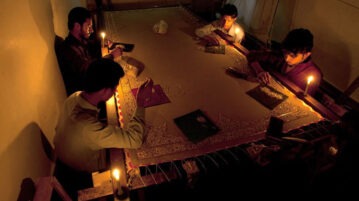Shehbaz Sharif, the country’s prime minister, had vowed to halt load shedding by May 1. Even during the Eid holidays, locals were not spared from load-shedding, which lasted 10 to 12 hours in several locations. Officials argue that the lack of energy is due to the inability to get needed fuel for power generation and the failure to maintain some power facilities. What, on the other hand, are the genuine facts?
From the years 2013 to 2018, a considerable number of thermal power plants were built without necessity, bringing the total installed capacity to 35,735MW at a time when the greatest demand was 23,000MW. Because the necessary transmission infrastructure was not created, this capacity could not be used. What most people don’t realize is that this is a major flaw that the authorities are continually exploiting. We built and completed the transmission lines and grid stations before completing the Warsak and Multan power units when WAPDA engineers were developing the country’s electricity infrastructure in 1958. The Mangla and Tarbela power stations were subjected to the same technique.
Circular debt is another big issue in the electricity sector. Independent power generators generate around 17,276MW of electricity. Even if their electricity is not used, they must pay the capacity costs. These independent producers were offered exceptionally favorable conditions under the PPP government’s 1984 Power Policy. This results in the loss of billions of rupees on a regular basis.
For example, let us take a look at the situation in the capital alone. Due to the inefficiency and mismanagement of IESCO authorities, a proposal to establish a separate feeder for the city to solve the rising problems of power tripping and load in the city of Daultala failed.
On paper, the project was completed a year ago, yet more than 20% of the work is still outstanding. IESCO’s construction and operations ignored this massive project, which went overlooked by customers instead of reaching its goals. It’s worth noting that the total cost of this project was Rs. 27.5 million.
Instead of constructing a city feeder, the city has been linked to three distinct feeders, which has exacerbated the power issues. IESCO authorities have only linked the city’s middle population to the city feeder, disregarding the project’s laws and regulations.
The Ahdi feeder serves the city’s northern population, while the Dera Muslim feeder serves the city’s southern population. Both feeders are dispersed across a large region and contain numerous load and line faults, resulting in an increase in power outages. This mismanagement and ineptitude should be quickly recognized and corrected by IESCO’s Chief Executive Officer.
The only way to solve the load-shedding problem is to build transmission infrastructure as soon as possible. This will also allow the electricity industry to reach out to neglected and undeveloped areas.








